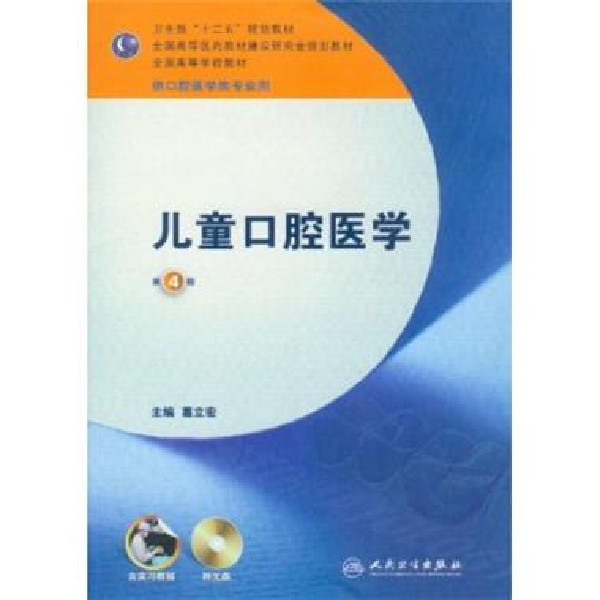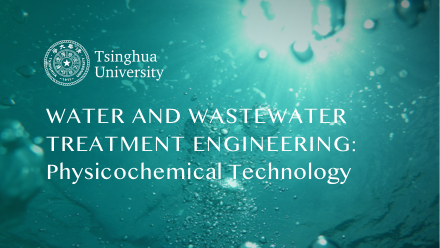
当前课程知识点:Water and Wastewater Treatment Engineering: Physicochemical Technology > Chapter 6 Ion-exchange > 6-5 Softening system using ion exchange > 6-5 Softening system using ion exchange
返回《Water and Wastewater Treatment Engineering: Physicochemical Technology》慕课在线视频课程列表
返回《Water and Wastewater Treatment Engineering: Physicochemical Technology》慕课在线视频列表
同学们好!前面我们了解了各种离子交换树脂的特性
接下来我们将学习离子交换软化系统
软化的目地主要是去除水中产生硬度的钙、镁离子
处理硬度超标的原水,以满足生活饮用或工业用水对水的硬度指标的要求
用离子交换来进行软化的工艺系统有几种类型
下面我们先介绍Na离子交换软化系统
在这个工艺系统中,利用强酸性Na离子交换树脂
去除水中的钙、镁离子,从而达到使水软化的目的
如图所示,该系统可以去除所有的硬度
包括碳酸盐硬度和非碳酸盐硬度
但不能去除碱度
因此该工艺适用于原水碱度低、不需要降低碱度的情况
根据水质情况,可以采用一级软化系统或二级串联软化系统
第二种类型是H离子交换软化系统
在这个工艺系统中,利用强酸性H离子交换树脂去除水中的钙、镁离子
如图所示,在该工艺系统中,硬度和碱度均能有效去除
但出水通常为酸性,因此需要与Na离子交换树脂联合使用
或者需要设置出水加碱中和措施
第三种是H-Na离子联合交换脱碱软化系统
首先介绍H离子和Na离子树脂的并联系统,工艺流程示意如这个图所示
原水分成两部分,一部分的水进入H离子交换器
一部分进入Na离子交换器
两部分的出水混合,H离子交换树脂产生的H+
和Na离子交换树脂出水中的HCO3-中和,生成CO2和H2O
再经除二氧化碳器吹脱去除CO2后
就可以获得脱碱软化后的处理水
在这里我们需要计算的是
在该并联系统中需要分配多少水量进入H离子交换器?
多少水量进入Na离子交换器?
假设H代表通过RH离子交换器的水量占总水量的比例
A_原代表原水碱度,Q代表总处理水量
S代表原水中强酸根的总浓度,是硫酸根和氯根的总和
A_残代表系统出水中的残留碱度,一般控制在0.3-0.7mmol/L
如果H离子交换器的运行以Na+泄漏为失效点
则经H离子交换器产生的强酸量等于SQH
而Na离子交换器出水的碱度等于A_原Q(1-H)
而系统出水中的剩余碱度为QA_残
根据酸碱中和,做物料平衡
Na离子交换器出水碱度与H离子交换器产生的强酸中和后的剩余碱度
即等于系统出水的剩余碱度
这个式子经变换后,就可以得到分配给H离子交换器的水量比例H的计算式
由此,就可以计算分配给H离子交换器和Na离子交换器的水量
此外,我们也可以将H离子交换器和Na离子交换器串联使用
工艺流程如这个图所示
原水一部分进入H离子交换器
另一部分直接超越H离子交换器,与H离子交换器的出水混合
产生的CO2在除二氧化碳器中被吹脱去除后
全部进入Na离子交换器,经进一步处理后得到脱碱软化水
虽然在工艺形式上与并联系统相比有所改变
但串联系统的H离子交换器
和Na离子交换器的水量分配计算公式与并联时的完全相同
并联系统和和串联系统各有什么特点呢?
H-Na并列系统通常适用于碱度高的原水
Na离子交换器只处理部分水量,因此投资较省
H-Na串联系统通常适用于硬度较高的原水
由于部分水量经过了二级软化,出水水质较好
但Na离子交换器需要处理全部水量,设备较大
在软化脱碱系统中,产生的CO2量可以通过理论计算获得
即1mmol/L HCO3-,产生44mg CO2/L
这一讲介绍了离子交换软化系统
在下一讲,我们将介绍离子交换除盐系统
-0-2 Water treatment process
-0-3 Wastewater treatment process
--0-3 Wastewater treatment process
-Chap 0 Homeworks
-1-1 Introduction
-1-2 Properties of colloids
-1-3 Mechanisms and process of coagulation and flocculation
--1-3 Mechanisms of coagulation and flocculation
-1-4 Coagulant and coagulant aids
-- 1-4 Coagulant and coagulant aids
-1-5 Kinetics of coagulation and flocculation
--1-5 Kinetics of coagulation and flocculation
-1-6 Factors affecting the coagulation performance
--1-6 Factors affecting the coagulation performance
-1-7 Facilities for coagulation and flocculation
--1-7 Facilities for coagulation and flocculation
-Chapter 1 Homeworks
-2-1 Introduction
-2-2 Discrete particle settling
--2-2 Discrete particle settling
-2-3 Flocculent settling
-2-4 Zone settling
-2-5 Rectangular settling tank
--2-5 Rectangular settling tanks
-2-6 Process calculation of rectangular settling tanks
--2-6 Process calculation of rectangular settling tanks
-2-7 Vertical Flow (up-flow ) and radial flow settling tank
--2-7 Vertical Flow (up-flow ) and radial flow settling tank
-2-8 Plated sedimentation tank
--2-8 Plated sedimentation tank
-2-9 Clarification pool
-3D interactive demonstration for settling tanks
-Chapter 2 Homework (part 1)
-Chapter 2 Homework (part 2)
-3-1 Introduction
-3-2 Theoretical foundation of air floatation
--3-2 Theoretical foundation of air floatation
-3-3 Pressurized dissolved air flotation
--3-3 Pressurized dissolved air flotation
-Chapter 3 Homework
-4-1 Introduction
-4-2 Structure and process of conventional rapid filter
--4-2 Structure and process of conventional rapid filter
-4-3 Water head loss of filter
--4-3 Water head loss of filter
-4-4 Filtration method of filter
--4-4 Filtration method of filter
-4-5 Filter media
-4-6 Water distribution system
--4-6 Water distribution system
-4-7 Filter backwashing
-4-8 Siphon filter
-4-9 Gravity valveless filter
--4-9 Gravity valveless filter
-4-10 Movable hood filter
-3D interactive demonstration for filtration tanks
--Usage and description for 3-D demonstration
-Chapter 4 Homework
-5-1 Introduction
-5-2 Influence factors of disinfection
--5-2 Influence factors of disinfection
-5-3 Chlorine disinfection
-5-4 Chlorine dioxide disinfection
--5-4 Chlorine dioxide disinfection
-5-5 Ultraviolet disinfection
--5-5 Ultraviolet disinfection
-Chapter 5 Homework
-6-1 Ion-exchange resin
-6-2 Properties of ion-exchange reactions
--6-2 Properties of ion-exchange reactions
-6-3 Properties of cation exchange resin
--6-3 Properties of cation exchange resin
-6-4 Properties of anion exchange resin
--6-4 Properties of anion exchange resin
-6-5 Softening system using ion exchange
--6-5 Softening system using ion exchange
-6-6 Desalination system using ion exchange
--6-6 Desalination system using ion exchange
-6-7 Ion-exchange equipment
-6-8 Treatment of industrial wastewater by ion-exchange method
--6-8 Treatment of industrial wastewater by ion-exchange method
-Chapter 6 Homework
-7-1 Introduction
-7-2 Principle and characteristics of electrodialysis
--7-2 Principle and characteristics of electrodialysis
-7-3 Configuration of electrodialysis unit
--7-3 Configuration of electrodialysis unit
-7-4 Operating parameters for electrodialysis unit
--7-4 Operating parameters for electrodialysis unit
-7-5 Principle and process of reverse osmosis
--7-5 Principle and process of reverse osmosis
-7-6 Operating parameters for reverse osmosis
--7-6 Operating parameters for reverse osmosis
-7-7 Principles and characteristics of UF and MF
--7-7 Principles and characteristics of UF and MF
-7-8 Design of ultrafiltration and microfiltration process
--7-8 Design of ultrafiltration and microfiltration process
-Chapter 7 Homework
-8-1 Fundamental knowledge and classification
--8-1 Fundamental knowledge and classification
-8-2 Ozonation
-8-3 Photo-catalytic oxidation
--8-3 Photo-catalytic oxidation
-8-4 Supercritical water oxidation
--8-4 Supercritical water oxidation
-8-5 Electrolysis
-Chapter 8 Homework
-9-1 Introduction
-9-2 Adsorption equilibrium and adsorption isotherm
--9-2 Adsorption equilibrium and adsorption isotherm
-9-3 Adsorption breakthrough curve
--9-3 Adsorption breakthrough curve
-Chapter 9 Homework


